Towards the gerontocene?

All statistics concur: total fertility rates are falling across the world. Knowing that a population is stable with 2.1 children per woman, fertility rates worldwide have dropped from 5 children in the 1960s to around 2.5 in 2015 (World Bank 2015). Such statistics suggest that fertility rates will remain above the 2.1 threshold for the foreseeable future, which means that world population should keep increasing in the foreseeable future.
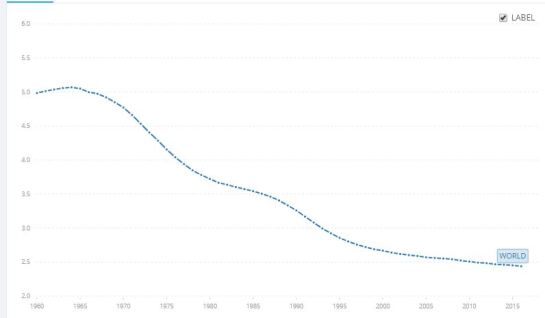
(Source: World Bank)
But I feel this data hides another reality, better captured by the United Nations 2015 World Fertility Patterns 2015 (UN 2015), by looking at total fertility by continent and subcontinent
| 2010-15 TFR* | 2025-30 PTFR** | |
| Europe | 1,6 | 1,7 |
| Asia | 2,2 | 2 |
| North America | 1,9 | 1,9 |
| Latin America and Caribbean | 2,2 | 1,9 |
| Oceania | 2,4 | 2,2 |
| Africa | 4,7 | 3,9 |
(*)TFR: total fertility rate
(**) PTFR: Projected total fertility rate
What it shows is that, aside Africa, the only continent still demographically increasing by 2025-30 will be Oceania. In other words, by 2025-30, nearly all continents will be counting on African immigration to remain equally populated. Europe – particularly conservative countries – endlessly complains about African and Middle-eastern immigration but in 10 to 15 years, this very immigration will be the only source of additional young people. That’s assuming that these populations will still be in demand.
When you look at world population projections, it looks miles away from these “declinist” statistics. The graph below includes Africa, but even without Africa, the curve would still be climbing beyond 2025/2030. Why? Partly because people live much longer all across the world. And it is ageing that hides the change in adult populations.
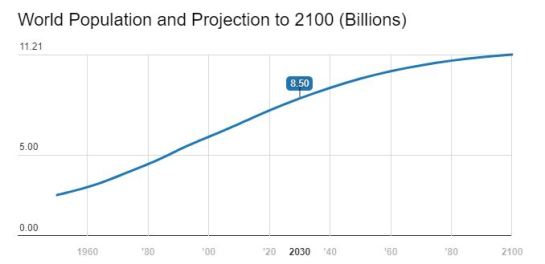
(Source: World Bank)
I feel my argument is best represented by the case of Central and South America. Let’s look at the trends until 2100 for the general population. It suggests a population peak around 2060.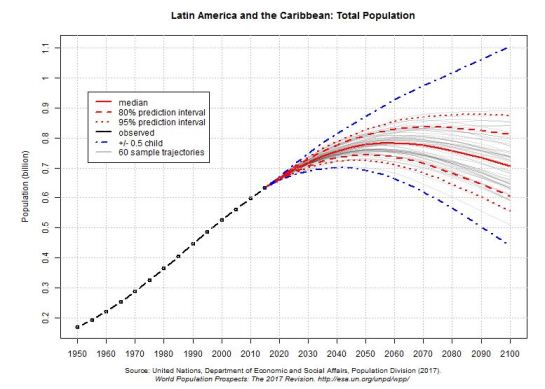
But let’s have a look at those same projections but by age group.

According to the median of projects, there is no foreseeable demographic peak during the 21st century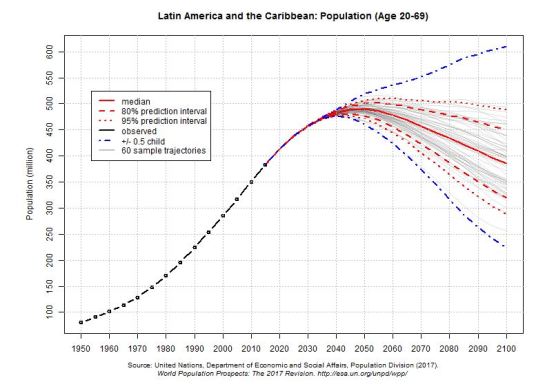
Regarding the adult population, we foresee a peak concurring around 10-15 years earlier than that of the general population.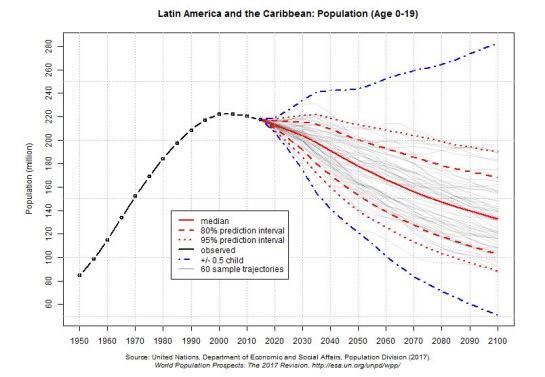
For the population younger than 20, the peak actually already occurred. In absolute numbers, the younger population has been declining for nearly 20 years.
According to demographic transition model, the initial transition phase is dominated by a large number of younger people. Later, as this cohort becomes older, the share of older people increases. In the case of fertility rates falling under generation replacement, we will see a period “abnormally” dominated by older people. This is going to be particularly true in Asia but also South America. Combined with emigration to North America and Europe, we may be looking forward to a hyper-old South American continent. Are we entering the gerontocene?